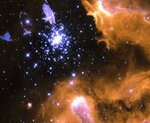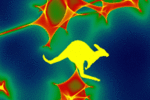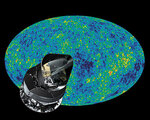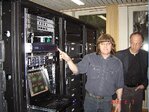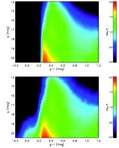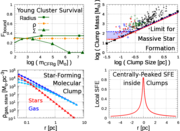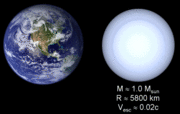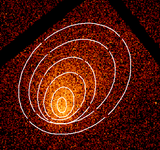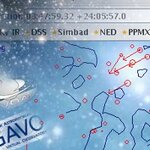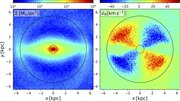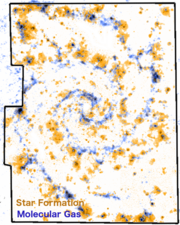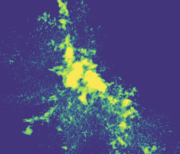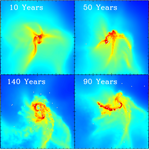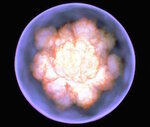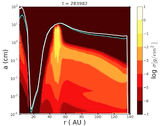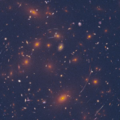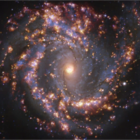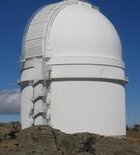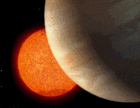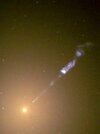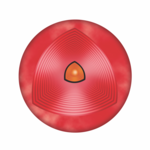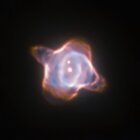Research Groups
Last update: July 2025
Astrophysical research at ZAH covers a broad spectrum in theory and observation, ranging from exoplanets and nearby stars to the Milky Way, external galaxies and quasars to the microwave background. ZAH is also involved in the development and building of instrumentation and the processing of special hard- and software. Research at ZAH is primarily organized and focused in research groups. There are currently (July 2025) 20 major and 10 minor research groups established at ZAH and two affiliated major research groups of HITS.
Research Groups at ARI
- Galaxy Evolution Group (Prof. Dr Eva Grebel)
- Gravitational Lensing Group (Prof. Dr Joachim Wambsganss)
- Galaxy Evolution and AGN Group (Prof. Dr Dominika Wylezalek)
- Statistics and Cosmology Group (Prof. Dr Bjoern Malte Schaefer)
- Computational Stellar Dynamics Group (Silk Road Project) (apl. Prof. Dr Rainer Spurzem)
- Theoretical galaxy evolution and stellar dynamics Group (apl. Prof. Dr Andreas Just)
- Gaia Group (Dr Michael Biermann)
- Lifecycle of Star Clusters Group (Priv. Doz. Dr Genevieve Parmentier)
- Galaxy star formation history Group (Priv. Doz. Dr Anna Pasquali)
- White Dwarfs Group (apl. Prof. Dr Stefan Jordan)
- Galaxy clusters Group (Dr Robert W. Schmidt)
- Virtual Observatory/eScience Group (Dr Markus Demleitner)
- Galactic Halos and Bulges Group (apl. Prof. Dr Andreas Koch-Hansen)
- Galactic Dynamics Group (Dr Walter Dehnen)
- ERC and Emmy Noether Research Group on the Baryonic Life Cycle (Dr Kathryn Kreckel)
- ERC Research Group on Computational/Theoretical Gas & Radiation Dynamics (Dr Max Grönke)
- Emmy Noether Research Group on Stellar Atmospheres and Mass Loss (Dr Andreas Sander)
Research Groups at ITA
- Planet Formation Group (Prof. Dr Cornelis Dullemond)
- Star Formation Group (Prof. Dr Ralf Klessen)
- Gravitational Wave Astrophysics Group (Prof. Dr Michela Mapelli)
- Physics of Stellar Objects Group at ITA and HITS (Prof. Dr Friedrich Röpke)
- Gravitational lensing and galaxy clusters Group (Priv. Doz. Dr Matteo Maturi)
- Astrochemistry and ISM Dynamics Group (apl. Prof. Dr Simon Glover)
- Emmy Noether Research Group on Computational Galaxy Formation and Evolution Group (Dr Dylan Nelson)
- Emmy Noether Research Group on Galactic Matter cycle (Dr Mélanie Chevance)
Research Groups at the LSW
- Galactic Archaeology Group (Prof. Dr Norbert Christlieb)
- Theory and Observations of Stars Group at HITS and LSW (Prof. Dr ir. Saskia Hekker)
- Instrumentation Group (Prof. Dr Andreas Quirrenbach)
- Exoplanet Group (Prof. Dr Andreas Quirrenbach / Priv.-Doz. Dr Sabine Reffert)
- Extragalactic Astrophysics & High Energy Astrophysics Group (apl. Prof. Dr Stefan Wagner)
- AGN Group (apl. Prof. Dr Jochen Heidt)
- Heisenberg Research Group on Hot Compact Stars (Dr Nicole Reindl)
Galaxy Evolution Group
Head: Prof. Dr Eva K. Grebel
This group's goal is to understand how galaxies formed and evolved over a Hubble time. Dwarf galaxies and the Milky Way are a special research focus. Star clusters and other stellar populations serve as valuable witnesses of the formation history of a galaxy, providing a fossil record also of its chemical and dynamical evolution and accretion history. The properties of galaxies in groups and clusters constrain their assembly histories, the origin of different galaxy types, and drivers of galaxy evolution such as environment, interactions, accretion, and internal, secular effects. Large international survey projects such as the SDSS, RAVE, Pan-STARRS, the Gaia-ESO Survey, ESA's cornerstone mission Gaia, and soon 4MOST and LSST provide a substantial part of the observational data, complemented by targeted follow-up with HST and other telescopes.
http://www.ari.uni-heidelberg.de/mitarbeiter/grebel/group.html
Gravitational Lensing Group
Head: Prof. Dr Joachim Wambsganss
Gravitational lensing is the deflection of light by massive objects in the universe. This changes the positions of background objects, magnifies them and distorts their shape. The most spectacular phenomena are multiple images (two or more) of a single background source. At the ARI multiply imaged quasar are studied with respect to brightness changes, light curves, time-delay determination and microlensing. Moreover, gravitational lensing is used to discover planets around other stars.
Statistics and Cosmology Group
Head: Prof. Dr Bjoern Malte Schaefer
This group studies statistical properties of the large scale structure and investigate the sensitivity of cosmological probes such as lensing and CMB anisotropies for constraining of cosmological models and measuring cosmological parameters. The main tools are cosmic perturbation theory for the description of structure growth processes and statistics such as Markov chains for exploring parameter spaces, non-Gaussian random processes and statistical inference. Additionally, the group investigates tidal interactions of galaxies with the surrounding large-scale structure and work on the description of these alignment processes in the language of weak lensing. Applications of our investigations are/will be done in with the PLANCK- and EUCLID-projects.
Computational Stellar Dynamics Group (Silk Road Project)
Head: apl. Prof. Dr Rainer Spurzem
In the computational stellar dynamics group structure, dynamics and mass distribution of stellar systems are investigated. This ranges from the formation and evolution of planetary systems, the evolution of star clusters, the Milky Way and other galaxies, to Newtonian and relativistic dynamics of black holes embedded in dense stellar systems. Since mathematical solutions for real astrophysical systems are very rare, computer simulations are an important tool in this field. Data extracted from high-performance computer modelling are compared with theory or observations. For example we have recently simulated the evolution of a one million-body star cluster with results comparable to observations with modern ground or space based telescopes; and we are predicting gravitational wave (GW) emission from black holes in star clusters across the entire GW spectrum. Some of the predictions are in currently observed windows, some will only be in the future become observable. In the Silk Road Project we collaborate with the National Astronomical Observatories in China and other astrophysical institutes on the Silk Road (Kiev, Ukraine; Almaty, Kazakhstan); cutting edge supercomputing facilities with GPU accelerators are used in Germany and China. For early adopting of new hardware and software a supercomputing development lab is operated by our team at the ARI, which has partly been funded by SFB881 and by Volkswagen Foundation (GRACE project).
http://wwwstaff.ari.uni-heidelberg.de/mitarbeiter/spurzem/index.html http://silkroad.bao.ac.cn
Theoretical Galaxy Evolution and Stellar Dynamics Group
Head: apl. Prof. Dr Andreas Just
Three main topics are investigated in this group: 1) The dynamical interaction of galactic nuclei with the orbital evolution and growth of supermassive black holes after a galaxy merger is investigated by high resolution numerical simulations. 2) The dynamical evolution of open clusters in the tidal field of the Milky Way and detailed models of individual clusters are investigated theoretically and with the help of star-by-star simulations. 3) A semianalytic chemodynamical model of the Milky Way disc is developed on the basis of an evolutionary scenario and large observational catalogues like the astrometric Gaia catalogue, the photometric Gaia, SDSS, 2MASS data, and the spectroscopic data of APOGEE, RAVE, GES.
The image shows the colour-magnitude diagrams of star counts towards the north Galactic pole: model (top), SDSS data (bottom).
Gaia Group
Head: Dr Michael Biermann
The Gaia group at Heidelberg consists of 10 members, half of whom are software developers. This dedicated team is responsible for crucial tasks within the Gaia mission. They lead Gaia Coordination Unit 3 of the Gaia Data Processing and Analysis Consortium (DPAC) which is responsible for the processing of Gaia's astrometric data. Their responsibilities further encompass a wide range of activities, including ensuring the quality control of Gaia's scientific performance (Gaia First Look), coordinating ground-based observations to accurately determine the satellite's orbit (GBOT), managing a Gaia partner data center (https://gaia.ari.uni-heidelberg.de), creating 3D visualizations of Gaia data (https://zah.uni-heidelberg.de/gaia/outreach/gaiasky), and the management of outreach efforts of DPAC. The Gaia group's expertise and contributions draw upon the rich heritage of the institute, with a legacy spanning 300 years in the fields of positional astronomy, reference systems, and ephemerides. For more information about the Gaia group at Heidelberg and their contributions to the mission, please visit http://www.ari.uni-heidelberg.de/gaia/. (2023/06/06)
Lifecycle of Star Clusters Group
Head: Priv.-Doz. Dr Eng. Genevieve Parmentier
The Lifecycle of Star Clusters Group aims at constraining the formation conditions of star clusters, and the imprints they leave on the properties of star cluster systems. To achieve our goals, models are developed and compared consistently with observational results. The image shows four modelling outcomes: the bound fraction of stars in clusters after gas expulsion in dependence of their mass-radius relation at birth (top-left panel), the limit for massive star formation in the mass-size space of molecular structures (top-right panel), the volume density profiles of gas and stars in a cluster-forming clump (bottom-left panel), and the corresponding radial profile for the star formation efficiency (bottom-right panel).
http://wwwstaff.ari.uni-heidelberg.de/mitarbeiter/gparm/
Galaxy Star Formation History Group
Head: Priv. Doz. Dr Anna Pasquali
Star formation plays a fundamental role in the evolution of galaxies, as stars change the properties of the interstellar medium, and thus change the initial conditions of the next episode of star formation. The details of such a complex mechanism are still observationally not well established. The research conducted by this group focuses on the properties of star-forming regions and young star clusters in the Milky Way and in external galaxies, as well as on the stellar populations of early-type galaxies up to z~2 in order to constrain the star formation history and the mass growth of galaxies. Galaxy evolution is driven not only by intrinsic processes, but also by environmental effects. This groups studies how galaxy environment changes the properties of satellite vs central galaxies as a function of galaxy group/cluster dark matter content. Observational data come from SDSS, ESO, LBT, CAHA, IAC/La Palma and HST.
White Dwarfs Group
Head: apl. Prof. Dr Stefan Jordan
Stars with initial masses up to about eight solar masses finally end up as white dwarfs. With typically 0.6 solar masses and radii of about 10^9 cm (0.01 solar radii) the mean densities of white dwarfs are of the order of 10^5-10^6 g/cm^3 so that these stars can be considered as laboratories for matter at extreme densities and pressures. About 10% of the white dwarfs have magnetic fields with strengths from 1 kG to 1 GG. The measurement of the field strength, the determination of the field geometry, and the interpretation of the results within the framework of stellar evolution is the major goal of this working group. Additionally, there is a connection to basic physics because only magnetic white dwarfs offer the opportunity to study the behaviour of atoms in strong magnetic fields in detail.
Galaxy clusters Group
Head: Dr Robert W. Schmidt
The intergalactic gas in galaxy clusters is extremely hot (>10^7 K) and thin (about 100 particles per cubic meter), and it radiates by thermal bremsstrahlung in the X-ray regime. We use spectroscopic and imaging data from X-ray satellites to study density and temperature of the gas, and to infer the distribution of dark matter in galaxy clusters to compare with cosmological simulations. X-ray masses are complemented by observations of gravitational lensing effects in the optical regime.
Virtual Observatory/eScience Group
Head: Dr Markus Demleitner (last update 22/07/08)
Astronomy is rapidly becoming a data-intensive science, which means that mining diverse and/or large data collections drives large parts of current research. This requires the constant development of a powerful information technology infrastructure. At ARI, we do our part by particpating in the Virtual Observatory through the German VO organisation GAVO, for which we are operating a data center and developing server software as well as user programs (e.g., splat) and standards for computer protocols and data models. If you want to get your own data into the VO or require support when using the VO, do not hesitate to get in contact with us.
Galactic Halos and Bulges Group
Head: Priv. Doz. Dr Andreas Koch-Hansen (last update: 21/07/12)
This group studies galactic halos and bulges. Current theories and observations suggest that the halo of the Milky Way was built up over a long time scale by the ingestion of disrupted, smaller fragments such as dwarf galaxies and globular clusters. The questions that are addressed in this group are: What characterizes those subgalactic objects? How and on what time scales were the components of galactic halos formed and enriched with chemical elements? What is the role of dark matter in their evolution? The idea is to answer these questions by chemical abundance analyses of bulge and halo field stars, globular clusters, and dwarf galaxies. Data for these projects are gathered, amongst others, from the ESO/VLT, Magellan, and Keck facilities, and we are involved with the 4MOST and BDBS surveys.
https://wwwstaff.ari.uni-heidelberg.de/akoch/
Galactic Dynamics Group
Head: Dr Walter Dehnen
This group studies the dynamics of gravitational systems, in particular galaxies and especially the Milky Way. Self-gravitating systems are non-linear and exhibit complex behaviour. In the context of galaxies, this includes interactions, tidal disruption, warps, spiral structure, bars, and more. The study of these processes in theory and simulation together with comparisons to observations enables the understanding of the dynamics of galaxies and allows conclusions about their formation, evolution, and dark-matter distribution.
Baryonic Life Cycle Group
Head: Dr Kathryn Kreckel (ERC and Emmy Noether Research Group Leader)
To understand galaxies, we must understand the physical processes and local conditions that drive their buildup of stellar mass through star formation. This evolution is regulated through the baryon cycle, the transformation of gas into stars and eventual ejection and recycling of that material to form the next generation of stars. The relevant physics occurs on the 50 pc scales of individual molecular clouds, star forming HII regions and supernova remnants, only now accessible in a diverse sample of external galaxies. This group works within the PHANGS collaboration to use ALMA and VLT observations to identify and characterize the physical conditions in and around HII regions and ask: How does metal enrichment proceed within the disk? Does the injection of energy and momentum from stellar winds and supernovae trigger or suppress star formation? What is the source of ionization in the diffuse ionized gas? Addressing these topics ultimately requires us to map the internal ionization structure of star-forming regions, which will be undertaken in an ambitious new Local Volume Mapper (LVM/SDSS-V) spectroscopic survey of the Milky Way and Local Group galaxies. (23/05/26)
https://wwwstaff.ari.uni-heidelberg.de/kkreckel/
Computational/Theoretical Gas & Radiation Dynamics Group
Head: Dr Max Grönke (ERC Research Group Leader) (last update 25/07/18)
This group investigates the complex interplay of gas dynamics and radiative processes that shape galaxy formation and evolution. They employ a range of tools, from high-performance computing to analytical theory, to study these fundamental astrophysical phenomena. Research focuses on:
- Radiative Processes and Transfer: modeling resonant line transfer (e.g., Lyman-alpha), ionizing photon escape, and photon-gas interactions to connect theory with observations, particularly those of high-redshift galaxies and their surroundings, as well as the Epoch of Reionization.
- (Magneto-)Hydrodynamics: exploring the dynamics of multiphase gas across diverse astrophysical environments, including the interstellar, circumgalactic, and intracluster medium (ISM, CGM, and ICM, respectively). Work also addresses the broader galactic ecosystem, investigating processes such as galactic winds and fountain flows.
- High-Performance Computing: developing and applying novel numerical methods to model multiscale processes in galaxy formation with high fidelity.
By integrating theoretical insights with computational models and observational data, the group aims to advance our understanding of the physical mechanisms governing galaxies and their gaseous environments across cosmic time.
Galaxy Evolution and AGN Group (GALENA)
Head: Prof. Dr Dominika Wylezalek (last update 25/07/30)
The energy output of actively accreting supermassive black holes (active galactic nuclei, AGN) has become a critical ingredient in modern galaxy formation theories and is widely considered to be the main driver in regulating the growth of massive galaxies. This energy typically exceeds the binding energy of a galaxy, such that even if only a few percent of that energy couples to the gas, gas may be heated and/or driven outside the galaxy which can effectively quench star formation activity. The critical role of AGN in galaxy formation was hypothesised two decades ago, yet this paradigm only recently obtained observational support and specific observational evidence of AGN-driven feedback has been surprisingly hard to come by. The group's research focuses on finding concrete observational evidence for the self-regulation of supermassive black holes and their host galaxies, on understanding the power, reach and impact of feedback processes exerted by AGN, and on the role of AGN in galaxy evolution at all cosmic epochs. The group aims to characterise the internal structure and the multi-phase nature of AGN feedback signatures, determine outflow masses and energetics, and inventory the sources of gas excitation. To achieve these ambitious goals, data from state-of-the-art ground- and space-based telescopes are being used to determine the physical properties of AGN-driven winds and to measure how and how much gas they can remove from their host galaxies. Specifically, the group leverages and will continue to leverage integral field unit observations, including data from the approved JWST Early Release Science program Q3D, which yield complex datasets probing spatially resolved stellar and gas kinematics and enable fundamentally new methods of investigating AGN feedback.
https://wwwstaff.ari.uni-heidelberg.de/dwylezalek/galena.html
https://wwwstaff.ari.uni-heidelberg.de/dwylezalek/
Emmy Noether Research Group on Stellar Atmospheres and Mass Loss
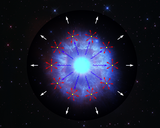
Head: Dr Andreas Sander (Emmy Noether Research Group Leader) (last update: 21/08/17)
Located at the conjuction of observation, theory and numerical astrophysics, research of this group revolves around the application and development of stellar atmosphere models to uncover the life and fate of hot stars and their winds. A particular emphasis of the group is the research on hot massive stars. With their high luminosity, these stars are major building blocks of galaxies as they dominate their surrounding with their strong stellar winds and their ionizing radiation. As production sites of heavy elements, massive stars also act as engines of the cosmic chemical evolution. By performing quantitative spectroscopy, simulating their winds, and providing predictions for their apperance and feedback, the group aims to uncover more about the enigmatic role of hot and massive stars in the Universe.
https://wwwstaff.ari.uni-heidelberg.de/ansander/
Gravitational Wave Astrophysics Group
Head: Prof. Dr Michela Mapelli
The first direct detection of gravitational waves in 2015 has opened new perspectives for the study of compact objects and their progenitor stars. This group does astrophysics with gravitational-wave sources: they study the formation of (binary) compact objects by means of astrophysical models, and validate them against gravitational-wave data. What are the end products of binary star evolution? Can we build massive black holes from hierarchical chains of compact object mergers in star clusters? These are just some of the main open questions they address with their numerical models of binary evolution and star cluster dynamics. Results are compared with both electromagnetic and gravitational-wave data, with the aim of making predictions for future detectors, like the Einstein Telescope.
Star Formation Group at ITA
Head: Prof. Dr Ralf Klessen
This group work on different aspects of star formation in the Galaxy as well as in the early universe. Interstellar turbulence and formation and evolution of molecular clouds are studied, as well as the dynamical evolution of the Milky Way and its satellite galaxies. As this work relies heavily on computer simulations, the group also works on developing and improving numerical methods for astrophysics.
Physics of Stellar Objects Group at HITS Group and ITA
Head: Prof. Dr Friedrich Röpke
This research group seeks to understand the processes in stars and stellar explosions based extensive numerical simulations. Newly developed numerical techniques and the ever growing power of supercomputers facilitates a modeling of stellar objects in unprecedented detail and precision.
Planet Formation Group at ITA
Head: Prof. Dr Cornelis Dullemond
The planet formation group studies how planets and exoplanets are formed from cosmic dust in protoplanetary disk. This is done with numerical modeling, focusing on the structure, the formation and the evolution of planetary birthplaces (protoplanetary disks), the coagulation, fragmentation and motion of dust aggregates in these disks, the formation of planetesimals (i.e. 1-100 km-size bodies such as comets and asteroids), the runaway and oligarchic growth of planetary embryos out of swarms of planetesimals and the N-body interactions between newly formed planets. In addition, methods and codes for multi-dimensional radiative transfer are developed, for use in circumstellar and interstellar matter.
Galaxy Clusters Group
Head: Priv. Doz. Dr Matteo Maturi
The path of photons traveling through the Universe is deflected by the presence of matter fluctuations. This deflection phenomenon called gravitational lensing allows us to quantify the amount of matter in the universe, draw conclusions on how this matter is distributed and in general understand the properties of our Universe. In a certain sense it is an open window to an invisible universe. Within this context, (1) we search for giant gravitational arcs (strongly distorted images occurring in the vicinity of galaxy clusters); (2) we develop methods to measure the shape of galaxies to perform weak lensing analysis; (3) we use both strong and weak lensing, together with X-ray SZ and velocity dispersion observations, to reconstruct the matter distribution of galaxy clusters; (4) we study how to constrain cosmological parameters by counting peaks in weak lensing maps. All these studies take advantage of both ground based and space based data, as well as numerical simulations.
Astrochemistry and ISM Dynamics Group
![Map of [CII] surface brightness from a portion of a simulated galactic disk.](/fileadmin/_processed_/b/f/csm_CII-map_970ec1d17e.png)
Head: apl. Prof. Dr Simon Glover
The work of the Astrochemistry and ISM Dynamics Group focusses on two main topics: understanding how the physics of the ISM influences the location and efficiency of star formation, and studying how best to compare observations and simulations of the cold, dense gas in the ISM. One of the big open questions regarding star formation in galaxies is why the process is so inefficient, with only around 1% of the available molecular gas converted to stars per dynamical time. It seems clear that stellar feedback must play an important role in regulating the star formation rate and keeping the efficiency small, but the details of how this happens are not currently understood. We are therefore involved in a long-running effort to simulate the effects of stellar feedback on the ISM using state-of-the-art numerical techniques. Much of this work is being carried out as part of the SILCC project (SImulating the Life-Cycle of molecular Clouds; P.I. Prof. S. Walch-Gassner, Köln), but we are also carrying out complementary studies in Heidelberg using the AREPO moving-mesh code. The other main goal of our current efforts is understanding how to compare the results of simulations such as this to observations of the real ISM. The information provided to us by observational tracers of the gas in the ISM (e.g. HI 21cm emission or dust thermal emission) is inevitably incomplete and biased, making it far from straightforward to compare simulations and observations. Our approach is therefore to construct synthetic "observations" of our simulation results that can then be analyzed in exactly the same manner as real observations of the ISM. (Image: Map of [CII] surface brightness from a portion of a simulated galactic disk.)
Emmy Noether Research Group on Computational Galaxy Formation and Evolution Group
Head: Dr Dylan Nelson (Emmy Noether Research Group Leader)
The research group specializes in computational galaxy formation and evolution, designing and carrying out numerical simulations to better understand how galaxies grow across cosmic time. In particular, we seek to understand how gas flows: in to, out of, and around galaxies. To do so we pursue theoretical modeling of galaxy formation, the cosmic baryon cycle, cosmological gas accretion, the circumgalactic medium, and energetic feedback processes.
What is the origin, structure, and physics of the circumgalactic medium (CGM) of galaxies? What is the impact of baryonic feedback, driven by supernovae and supermassive black holes, on the CGM and baryon cycle? What are the observable signatures of cold (molecular/neutral), warm (ionized), and hot (e.g. x-ray emitting) gas in the interstellar medium (ISM) within galaxies, the circumgalactic medium (CGM) and intracluster medium (ICM) surrounding galaxies, and the intergalactic medium (IGM) on large scales? How can we develop novel computational methods to simulate the circumgalactic medium?
The group studies these questions through numerical simulations, predominantly run with AREPO, a finite volume hydrodynamics code based on a moving unstructured mesh, and is part of the IllustrisTNG project and the TNG50 simulation (www.tng-project.org), a next generation of cosmological magnetohydrodynamical simulations of galaxy evolution and large-scale structure formation.
Matter cycle group
Head: Dr Mélanie Chevance (Emmy Noether Research Group Leader)
Galaxies are in constant evolution, under the influence of the matter cycle within them: gas clouds assemble and collapse, stars form within them, and matter and energy are redistributed into the interstellar medium through the influence of stellar feedback and turbulence. It is one of the big unanswered questions in modern astrophysics which processes drive this multi-scale cycle and what its quantitative characteristics are. This research group makes use of state-of-the-art, high-resolution, multi-wavelength observations of a large range of galactic environments to observationally characterise the mass and energy flows within galaxies, determine how gas is converted into stars, and how stars eject the material again into the surrounding medium. Such observational measurements are key to overcome the main limitation of current simulations of galaxy formation and evolution.
Instrumentation Group
Head: Prof. Dr Andreas Quirrenbach (last update: 25/07/30)
At the LSW various instrumentation projects are undertaken. These include CARMENES (the visual and near-infrared high-resolution planet-finding spectrograph for the Carlar Alto 3.5 m telescope), LUCIFER (the near-infrared imaging spectrograph for the LBT), 4MOST (4-metre VISTA), CUBES (VLT), ANDES (ELT) or MOSAIC (ELT).
Exoplanet Group
Head: Prof. Dr Andreas Quirrenbach / Priv. Doz. Dr Sabine Reffert
The exoplanet group at the Landessternwarte Heidelberg focuses on finding and characterizing exoplanets around various types of stars, among them M dwarfs and K giants. We mostly employ Doppler spectroscopy, but also look for planets with other kinds of methods such as direct imaging and astrometry. We use telescopes around the world as well as on the Königstuhl to look for the subtle signatures of planets.
A particular interest of the group are dynamical analyses of multi-planetary systems, which help to understand how planetary systems form and evolve.
Galactic Archaeology Group at the LSW
Head: Prof. Dr Norbert Christlieb / Priv. Doz. Dr Hans-Günther Ludwig
The Galactic Archaeology Group at Landessternwarte Heidelberg is concerned with the search for the most metal-poor and hence oldest stars of the Galaxy, and the determination of their chemical abundance patterns. These stars are important tools for studying, e.g., the formation and chemical evolution of the Galaxy, the properties (e.g., mass, rotation) of the first generation of massive stars which exploded as type II supernovae and nucleosynthesis processes that occurred in them.
http://www.lsw.uni-heidelberg.de/projects/galactic_archaeology/index.phtml
Extragalactic Astrophysics & High Energy Astrophysics Group
Head: apl. Prof. Dr Stefan Wagner
This group consists actually of two sub-groups. One focuses on extragalactic astrophysics, including topics such as multifrequency studies of Blazars, Emission lines of AGN, Hot spots in radio galaxies, high-redshift quasars, structure of spiral galaxies and morphological evolution of galaxies in clusters. The other group focuses on Very-High Energy Gamma-Ray Astrophysics, in the context of the H.E.S.S. collaboration. The H.E.S.S. is a Cherenkov Telescope system for the investigation of cosmic gamma rays in the 100 GeV energy range.
http://www.lsw.uni-heidelberg.de/projects/extragalactic/
http://www.lsw.uni-heidelberg.de/projects/hess/hess.phtml
AGN Group at the LSW
Head: apl. Prof. Dr Jochen Heidt
This group focuses on host galaxies and cluster environment of BL Lac objects and QSOs; Identification of optically selected BL Lac objects via polarimetry; Radiation processes in radio-loud AGN ( Polarimetric monitoring at San Pedro Martir); Black holes; Galaxy evolution (particular at high-z), deep fields (the FORS Deep Field). In addition this group is involved in Near-infrared instrumentation.
http://www.lsw.uni-heidelberg.de/users/jheidt/group/group.html
Theory and Observations of Stars Group at HITS and LSW
Head: Prof. Dr. ir. Saskia Hekker
Understanding the physical processes that take place in stars and how these change as a function of stellar evolution is the ultimate goal of the Theory and Observations of Stars (TOS) group. The group focusses on low-mass main-sequence stars, subgiants, and red giants. These stars are interesting as they go through a series of internal structure changes. Furthermore, these are potential hosts of planets and standard candles for galactic studies (core helium burning red-giant stars), and hence exoplanet studies as well as Galactic archaeology, will also benefit from an increased understanding of these stars. The TOS group is an international node of the Stellar Astrophysics Centre (SAC), Aarhus, Denmark. (2023/05/26)
Heisenberg Research Group on Hot Compact Stars
Head: Dr. Nicole Reindl
This group studies the late, hot stages of stellar evolution in order to uncover the various evolutionary pathways of sun-like stars. Objects of interest include hot white dwarfs, central stars of planetary nebulae, and H-deficient stars. The group analyses optical and UV spectra which are by means of NLTE models to derive the atmospheric parameters of these stars. In addition, they study light curves to investigate close and wide binary systems, or spots on hot white dwarfs. (23/11/10)

